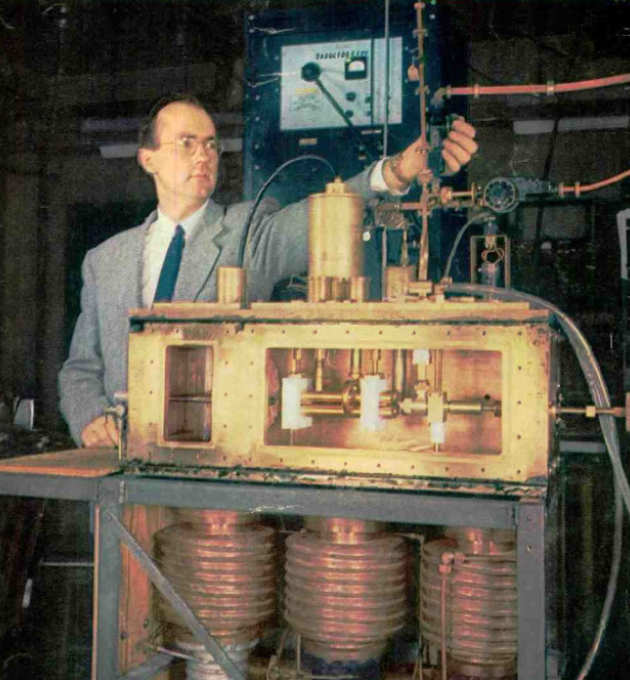MASER stands for Microwave Amplification Stimulated Emission of Radiation and it was invented by Charles Townes more than 60 years ago. Why are we interested in the MASER? And how did we solve a 60 year old mystery – making masers work at room temperature and in the earth’s magnetic field?

Noise is the bane of electronic engineers. We see it on our TVs and hear it on our mobile phones and our radios. A recent discovery indicates that there may well be a solution.
In the new world of Big Data, we’re increasingly dependent on accurate, reliable and secure communications. Countries with the best communications infrastructure experience faster rates of economic growth [1]. And the rapidly falling costs of data connections means that the number of services built around connected devices will only increase.
But this rapid growth poses a challenge. The microwave technologies that underpin today’s communications infrastructure – from satellite networks to Bluetooth to 4G – are all susceptible to electromagnetic interference. We’ve all experienced microwave noise: unexpectedly dropped call, crosstalk and Wi-Fi that grinds to a halt. As more devices attempt to communicate, this problem will only get worse.
Engineering electronics that are resistant to noise is technically possible but has always been costly. One early promising noise-limiting technology was the maser, discovered by Charles Townes in the 1950s and a sister technology to the laser. However, the MASER has had little widespread technological impact because it was inconvenient to use - only functioning in high magnetic fields, a vacuum and at temperatures close to absolute zero (-273°C). It was just too difficult so it was not surprising that Townes and his team turned to LASERs which could operate in the earth’s magnetic field and at room temperature.
We have a discovered a new design for a maser that overcomes these problems [2]. The performance of this new maser is orders of magnitude better than the best competing technology. The breakthrough means the cost to manufacture and operate masers could be dramatically reduced, paving the way for their widespread integration into telecommunications.
When lasers were invented no one knew exactly how they would be used; yet they are now ubiquitous. Already we can foresee additional applications for the re-engineered maser that include more sensitive medical scanners; chemical sensors for remotely detecting explosives; advanced quantum computer components; and better radio astronomy devices for potentially detecting life on other planets. In the near term, the discovery of a room temperature maser solves a real world challenge. It promises better communications that are resilient to the growing problem of noise in our connected infrastructure.
[1] Deloitte LLP. What is the impact of mobile telephony on economic growth? GSM Association (2012)
[2] Oxborrow M., Breeze J. D., Alford N. M. Room temperature maser. Nature 488:353–356 (2012)